
By Kevin Donmoyer - U.S. Fish and Wildlife Service
September 17, 2015
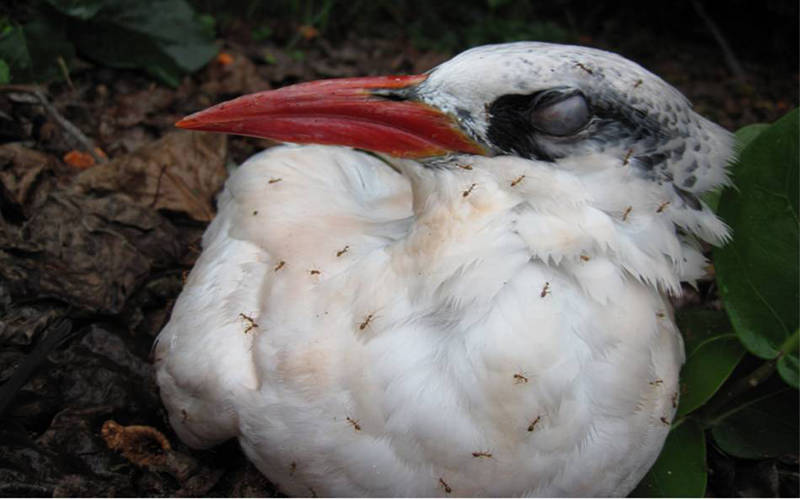
Blinded redtailed tropicbird on Johnston Island being swarmed with YCA. Image courtesy of Kevin Donmoyer, US Fish and Wildlife Service. Download larger version (jpg, 165 KB).
Invasive species are plants and animals that can take over areas and cause significant damage to native communities, resulting in a substantial disruption to the ecosystem as a whole. Remote oceanic islands are particularly vulnerable to such invasions. Isolation has left these places free of pests and terrestrial predators, making them ideal locations for seabirds to raise their young.
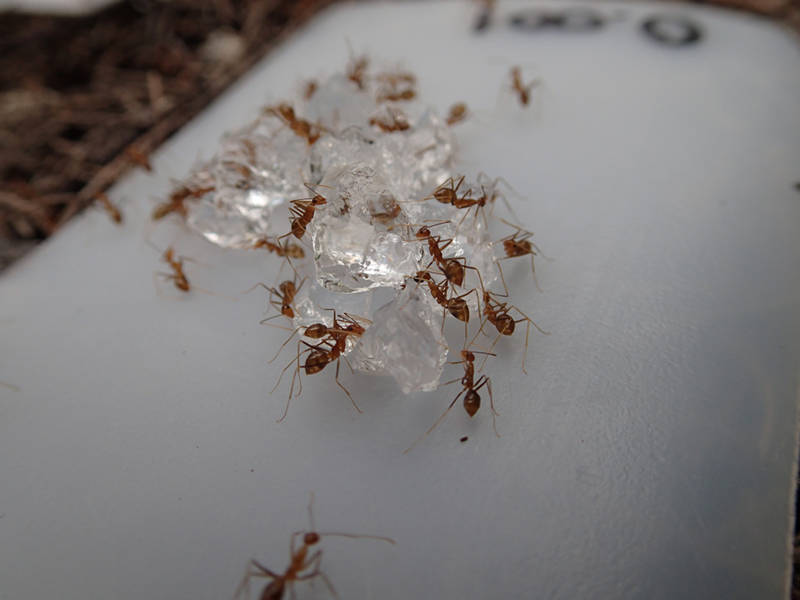
YCA feeding on hydrogel loaded with sugar water. Image courtesy of Kevin Donmoyer, US Fish and Wildlife Service. Download larger version (jpg, 3.0 MB).
Johnston Atoll National Wildlife Refuge, 720 miles southwest of Honolulu, Hawaii, is one such island; providing the only viable nesting habitat in 700,000 square miles of ocean. Seabird numbers were steadily increasing on Johnston until 2010 when biologists discovered that this oasis was being threatened. The yellow crazy ant (YCA), listed as one of the 100 top invasive species on the planet by International Union for the Conservation of Nature, was first observed in the refuge and was displacing all ground nesting seabirds wherever it occurred.
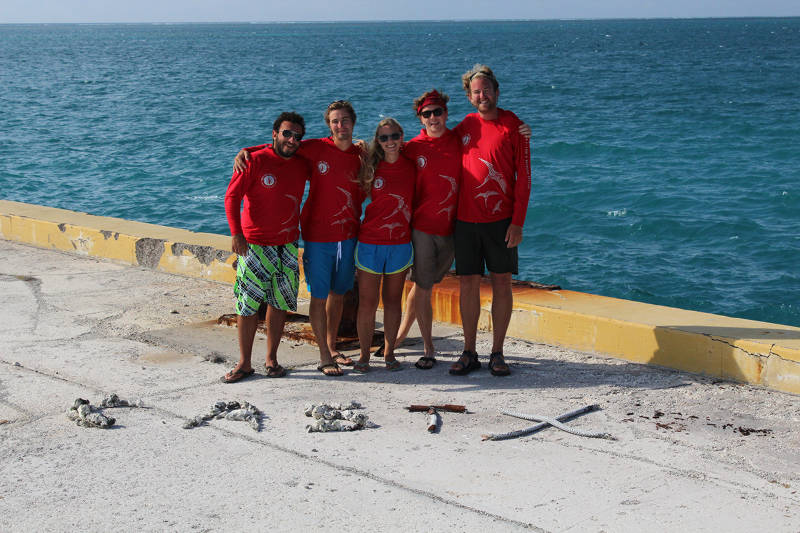
The crew of CAST 10 (left to right) Mike Abemayor, Jake Shaner, Crew Leader Katrina Scheiner, Jack Fields, and Greg Francois. Image courtesy of Kevin Donmoyer, US Fish and Wildlife Service. Download larger version (jpg, 3.7 MB).
Since their arrival, the supercolony of YCA has rendered a large portion of the already tiny island effectively useless for seabird nesting and reproduction. YCA disrupt seabirds attempting to roost and nest by spraying formic acid, an irritant, on the parents and chicks, resulting in nest abandonment and blindness.
Only months after discovering this population of YCA, the U.S. Fish and Wildlife Service (FWS) deployed a team of biologists to combat the growing problem: The Crazy Ant Strike Team (CAST). In the following five years, ten of these teams consisting of just five individuals have left their lives and modern conveniences behind, for six months at a time, to spend their days on this remote atoll, devising and implementing methods to eradicate the invasive ants. These years have been wrought with many challenges that have resulted in some stunning victories.
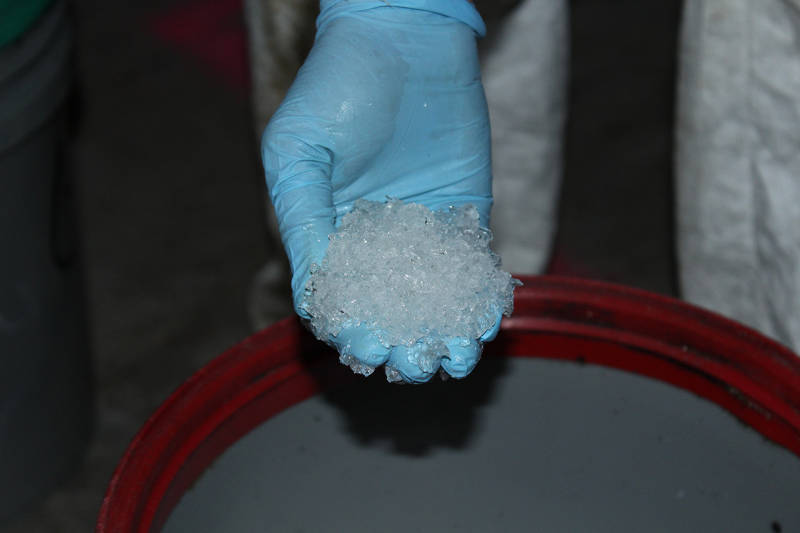
Freshly mixed hydrogel after absorbing sugar water pesticide mixture. Image courtesy of Kevin Donmoyer, US Fish and Wildlife Service. Download larger version (jpg, 2.2 MB).
Most recently, a new approach has been applied based on methods originally used to fight Argentine ants in the Channel Islands of California using polyacrylamide crystals, usually used in potted plant gardening. These crystals are hydrated with a mixture of water, sucrose, and pesticide, resulting in a “hydrogel.” The ants then drink the toxin-laden sugar water from this gel.
The ninth CAST was sent to Johnston with the primary mission of investigating the efficacy of the hydrogel approach on YCA. After six months of on-island research, including lab trials and small-scale field plots, the FWS team and its U.S. Geological Survey determined hydrogel to be an exciting alternative to previous CAST eradication techniques. After receiving the thumbs up to proceed, the tenth CAST began purchasing the necessary components of the bait, including 10,000 pounds of table sugar, 400 pounds of gardening crystals, and two 4,000-gallon water cisterns, all to be loaded on a boat and brought to Johnston Atoll.
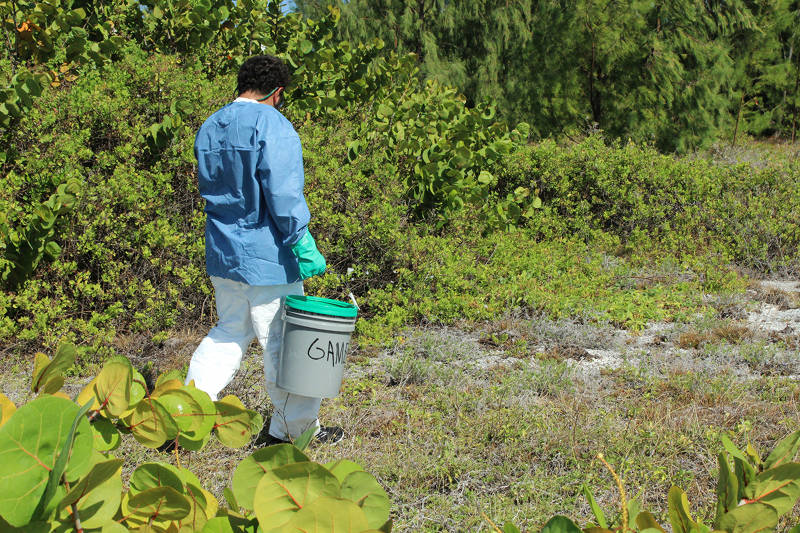
Volunteer Mike Abemayor applies hydrogel mixture to YCA infestation area. Image courtesy of Kevin Donmoyer, US Fish and Wildlife Service. Download larger version (jpg, 5.2 MB).
Just weeks after their arrival in June, the new CAST got to work implementing the methods. Results from successive months have been extremely encouraging. The monitoring stations within portions of the infestation baited with two applications of hydrogel rarely detect YCA. Perhaps the only bad news being reported from Johnston is that the volume of bait matrix required to accomplish this level of success exceeded the original expectations and no resupply was expected for the camp.
For most CAST deployments, a lack of resupply is simply a fact of life: jury-rigs and “MacGyver’ed” repairs are commonplace on the island, out of pure necessity. Unfortunately, things like polyacrylamide crystals are harder to fashion on island than a coconut telephone.
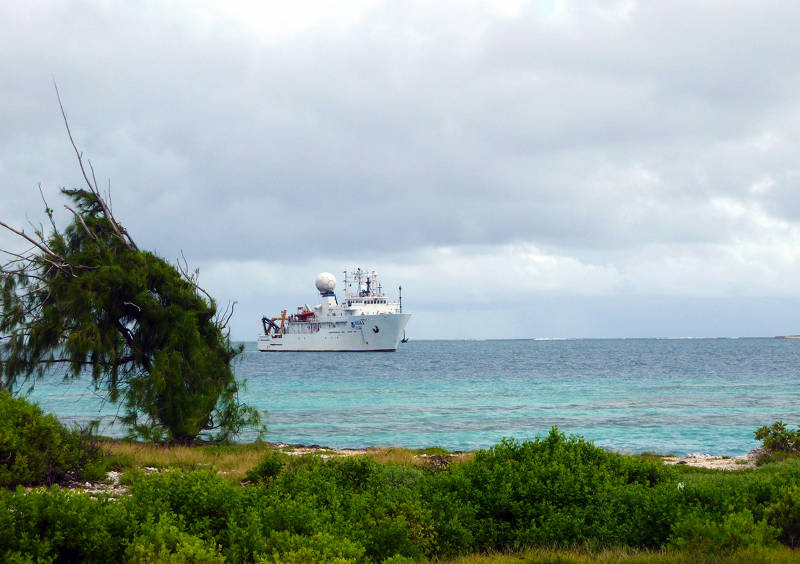
NOAA Ship Okeanos Explorer pulls into Johnston Atoll. Image courtesy of the NOAA Office of Ocean Exploration and Research, 2015 Hohonu Moana. Download larger version (jpg, 3.9 MB).
With limited bait resources on the island, the team was worried they may not be able to maintain the momentum that could lead to complete ant control. However, luckily the Okeanos Explorer was going to be in the neighborhood and offered to deliver materials to the island, including: 100 pounds of polyacrylamide crystals, camp supplies, some food, and personal mail sent from the crew’s family and friends.
Now, with their fresh supplies, CAST can continue their mission. In appreciation for their generosity, members of the Okeanos’ expedition have been invited to visit the island during their current leg. This visit will provide participating crew the opportunity to personally experience the wonderful place, which was previously only viewable from afar, if at all. Conversely, the FWS team who oversees Johnston Atoll and the current CAST are eager to see what images the remotely operated vehicle Deep Discoverer returns from the depths of the atoll!